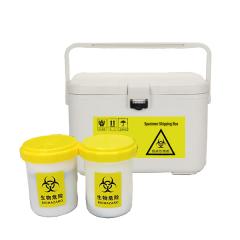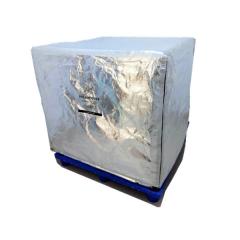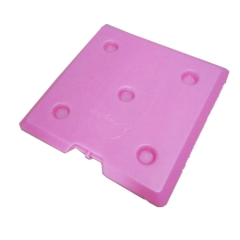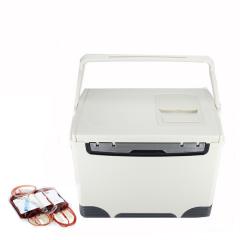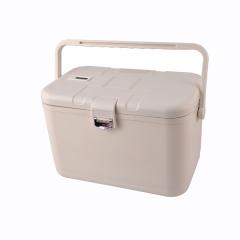6 Insider Tips for Traveling With Insulin
Key takeaways:
-
If you’re traveling with insulin and other diabetic supplies, take at least double the amount you’ll need for your trip. This prevents you from running out of insulin in the event of canceled flights or changed plans.
-
When traveling with insulin, keep it in your carry-on bag if you’re flying. You may consider using an insulin travel case to keep your insulin cold while you travel.
-
Talk to your healthcare provider about your insulin dose before traveling. They can let you know if you should adjust your dose and what to do if your blood sugar is higher than usual while traveling.
Packing for a long trip or vacation can be stressful. And having to bring medications with you only makes things more complicated. This is especially true if you have diabetes and rely on insulin to control your blood sugar levels. But how much should you bring and how do you pack it the right way (like in an insulin travel case)? As you plan your trip, here are some important things to keep in mind if you need to travel with insulin.
When traveling somewhere new, your diet might change. You may eat more often and try new foods that are part of the local cuisine. And you may find yourself eating more carbohydrates (such as pasta and rice) and sugar (like in sauces or drinks) than intended.
Even if you track what you eat while traveling, you still might need a higher insulin dose than you use at home. The CDC recommends bringing double the amount that you think you’ll need. This will help make sure you have enough insulin throughout your entire trip. Bringing double the amount also protects you from running out of insulin due to unexpected travel delays, like canceled flights.
When traveling with extra insulin, consider keeping spare insulin in different bags. This way, if you lose one bag, you’ll have a backup somewhere else. And make sure you bring enough diabetic supplies, too.
Some items that you may need include:
Alcohol swabs to clean the area where you’re injecting insulin
A blood sugar (glucose) monitor to check your blood glucose while you travel
Diabetic test strips, a lancing device, and lancets to test your blood sugar
Glucose tablets, glucose gel, or sugary snacks in case of low blood sugar
A glucagon kit in case you experience severely low blood sugar
Insulin syringes or pen needles if needed
Insulin travel case
Ketone test strips to warn about a serious condition called diabetic ketoacidosis (DKA)
Sharps disposal container to safely throw away your syringes and pen needles
It’s usually recommended to store unopened insulin in the fridge (with a temperature between 36ºF and 46ºF). But this isn’t always possible when you’re on the go.
If you’re traveling by car, you may consider storing insulin in a cooler. But you’ll want to make sure your insulin isn’t directly touching ice or ice packs to prevent it from getting too cold.
If you’re flying, or you don’t want to deal with a big cooler, there's other options. There are many insulin travel cases on the market that are made to store insulin easily. And many are made to keep your insulin cool for multiple hours or days. These are convenient alternatives to a larger cooler, and they can also fit into your carry-on bag.
If you’re flying, here are a few things to know about getting your insulin through airport security:
People with diabetes are exempt from the maximum volume limit of 3.4 oz or 100 mL.
Separate insulin and diabetic supplies from your other belongings and let the security agents know before your bags go through the screening process.
An X-ray machine might damage your insulin pump or continuous glucose monitor. Consider asking for a hand inspection instead.
Consider getting a U.S. Transportation Security Administration (TSA) notification card before flying. This helps discreetly inform security agents that you have a medical condition that may affect the screening process. You can also consider getting a letter of medical necessity from your healthcare provider.
It may be tempting to keep extra insulin in your checked bag, but you should avoid this in case the airline loses your bag. Checked bags may also be handled roughly, and your insulin could get damaged in the process.
While it’s recommended to store unopened insulin in the fridge, some insulin products can stay out of the fridge for a specific amount of time. The amount of time depends on the product. It varies between 10 and 56 days.
While insulin is safe to use immediately after taking it out of the fridge, it may be uncomfortable. Cold insulin can be painful to inject. To prevent pain, you can remove your insulin from the fridge and let it come to room temperature before using it. After your insulin product is opened, follow the manufacturer’s instructions for how long the opened insulin will last at room temperature.
In general, you can return opened insulin vials back to the fridge after using them. How long the vial will last out of the fridge depends on the specific product (between 10 and 56 days). But If you have an insulin pen, you shouldn’t put an opened pen back in the fridge. Once it’s been opened, it should stay at room temperature. The amount of time the pen lasts will depend on the specific product (between 14 and 56 days).
If you’re using an insulin pump, exactly how long the insulin in your pump lasts depends on the type of insulin and what type of pump you're using (between 2 and 7 days). If your insulin product and pump have different instructions about how long insulin will last in the pump, go with the directions that recommend the shortest amount of time for changing out insulin.
Note: Don’t put insulin in the freezer. Freezing insulin can change the insulin's quality, which may be unsafe.
You might be on the go quite a bit once you reach your destination. Perhaps, you’re spending time on a hot beach or skiing on a snowy mountain. Either way, there are some things you’ll want to know about keeping your insulin out of extreme temperatures.
Insulin breaks down at very high (or low) temperatures. This can make it less effective. Avoid exposing insulin to temperatures above 77ºF to 86ºF. The maximum temperature your insulin can be exposed to safely depends on the product. So if you’re going somewhere hot, be careful not to leave your insulin sitting outside or in a car for too long.
And if you’re going somewhere cold, keep your insulin somewhere close to your body to prevent it from getting too cold (like on the inside of your jacket in a pocket).
Always talk to your healthcare provider about how to administer insulin while traveling. They may give you some specific instructions for adjusting your insulin dose if your blood sugars get too high. They may also have specific recommendations if you’ll be entering a different climate or new time zone.
A different climate or time zone than what you’re used to may affect how much insulin you need. For example, if you’re traveling to a different time zone, you may need to adjust the times of your insulin doses. Talk to your healthcare provider about adjusting your insulin schedule before you travel.
If you have diabetes and are prescribed insulin, you know that insulin is so important to maintaining your health. This shouldn’t prevent you from traveling, but it does need a little planning in advance.
Unexpected things can happen while you travel. You could lose your insulin or experience travel delays. But with the right planning, you can limit any stress.
If you need medical assistance during your travels, consider the following tips:
Research nearby healthcare providers and pharmacies in the place you’re traveling to.
Not all insurance plans cover travel-related medical expenses. Consider buying travel insurance when you’re away from home.
Wear a medical ID that has information about your medical conditions, insulin usage, and medication allergies.
Always carry emergency contact information with you.
Learn phrases that may come in handy in the local language, like “I have diabetes.” Knowing how to say “Orange juice, please” might also be useful if you have hypoglycemia (low blood sugar).
Ask your healthcare provider for written prescriptions of your current medications, including insulin. This may help in case you need to replace lost medications during your travel. Ask for prescriptions of the generic name of the medications you take.
If you have diabetes and take insulin, you’ll want to make sure you know how to store and maintain your insulin if you’re traveling. Packing double the amount of insulin and other diabetic supplies is a good idea. You never know when travel delays or canceled flights will occur.
You’ll also want to consider that your insulin needs may change during travel. You may need more or less insulin depending on what the temperature is like, what you’re eating, and what activities you’ll be doing. Before going on your trip, talk to your healthcare provider and get their advice on how to best administer your insulin while traveling.
1. Bring more insulin and supplies than you need
2. Store insulin correctly while traveling to your destination
3. Store insulin correctly when you reach your destination
4. Avoid exposing your insulin to extreme temperatures
5. Know how to adjust your insulin dose during travel
6. Prepare for the worst
The bottom line

 日本語
日本語  English
English français
français русский
русский italiano
italiano español
español português
português العربية
العربية 한국의
한국의 magyar
magyar





